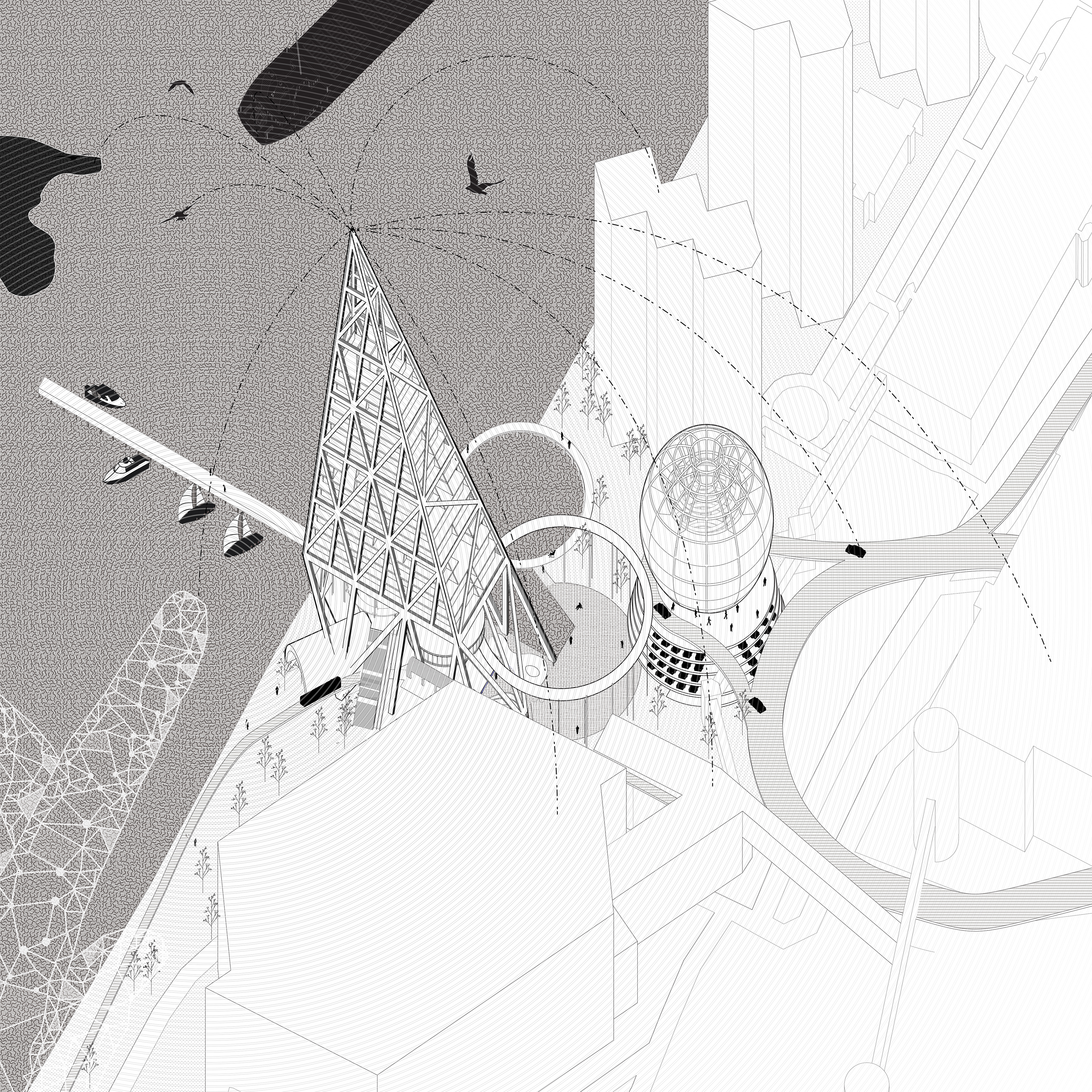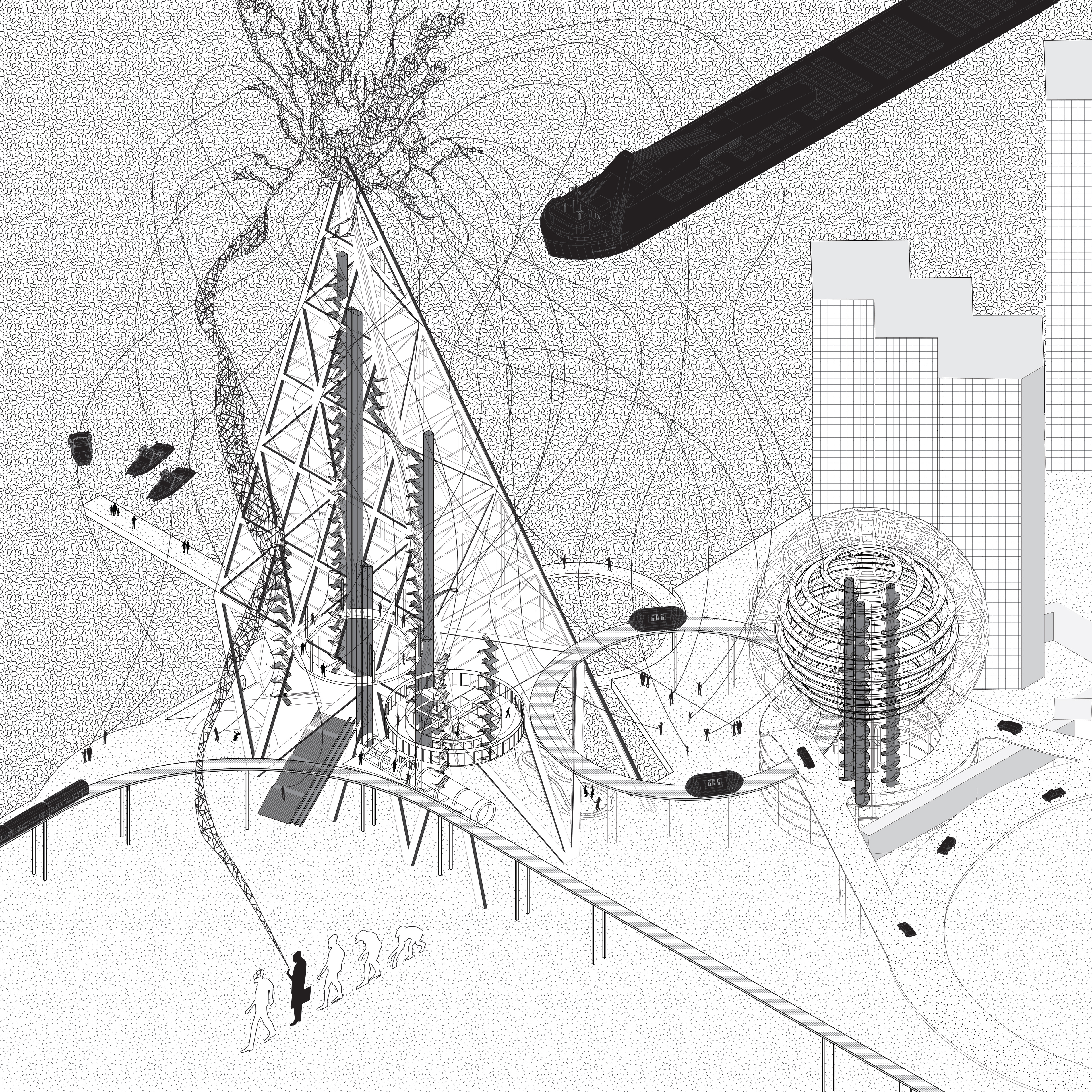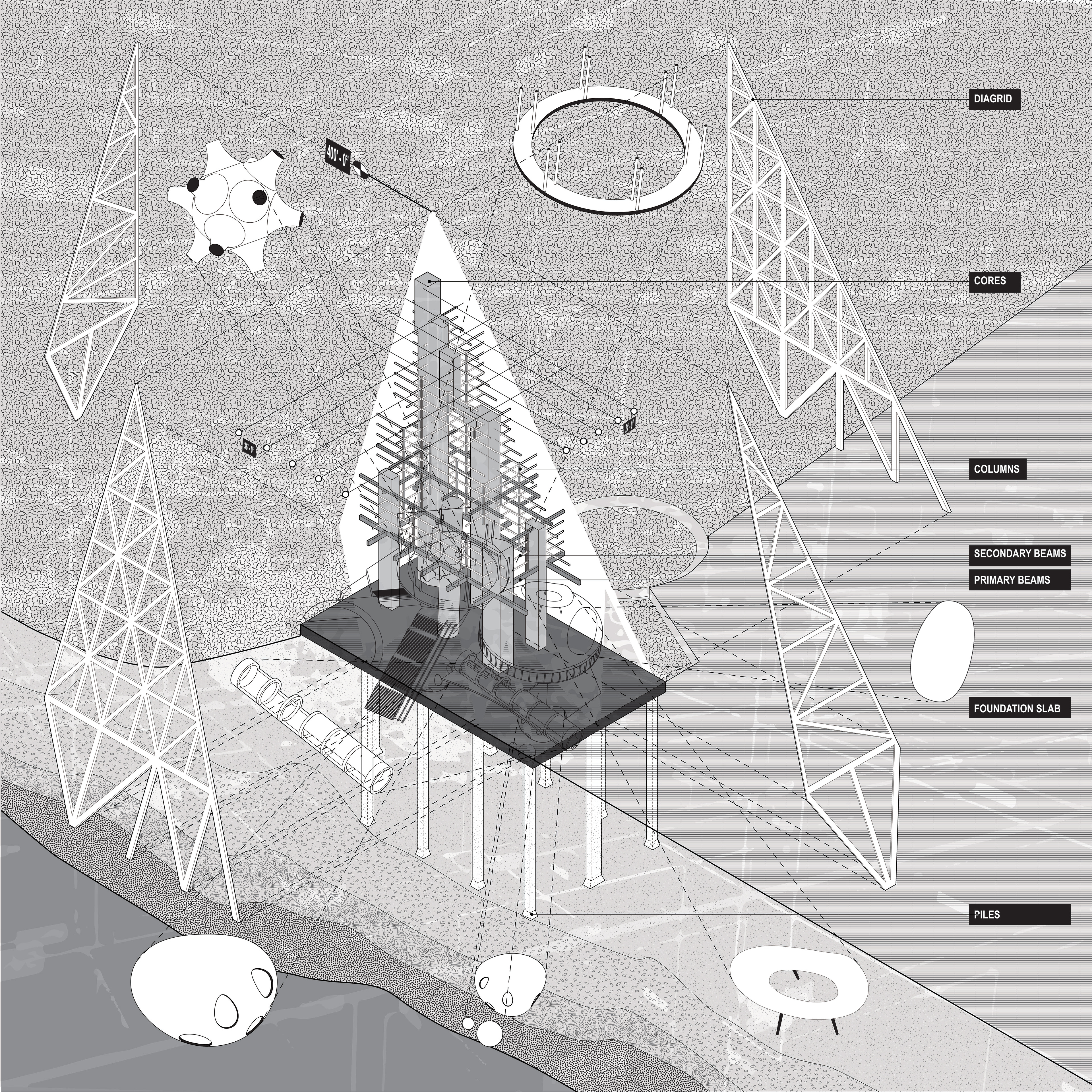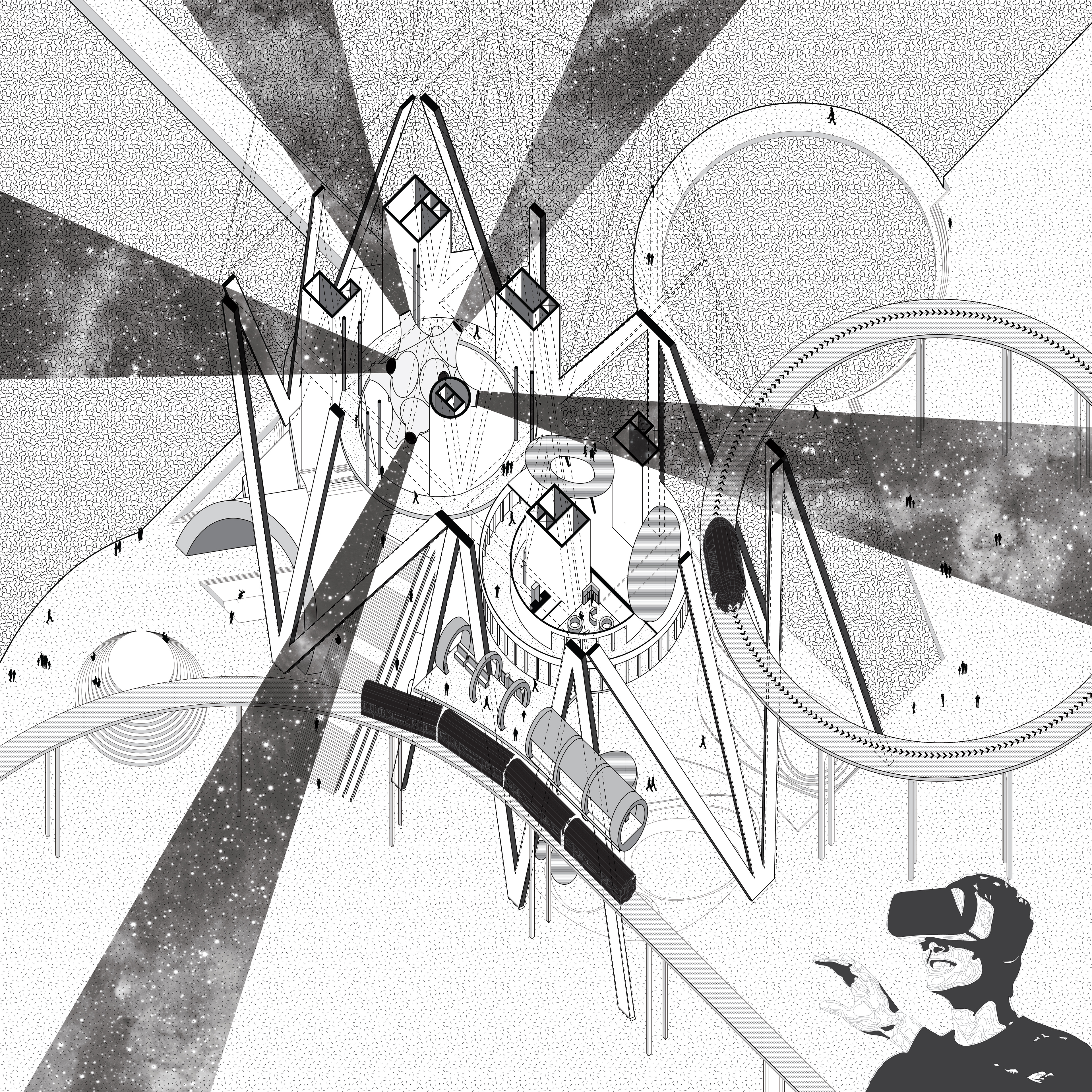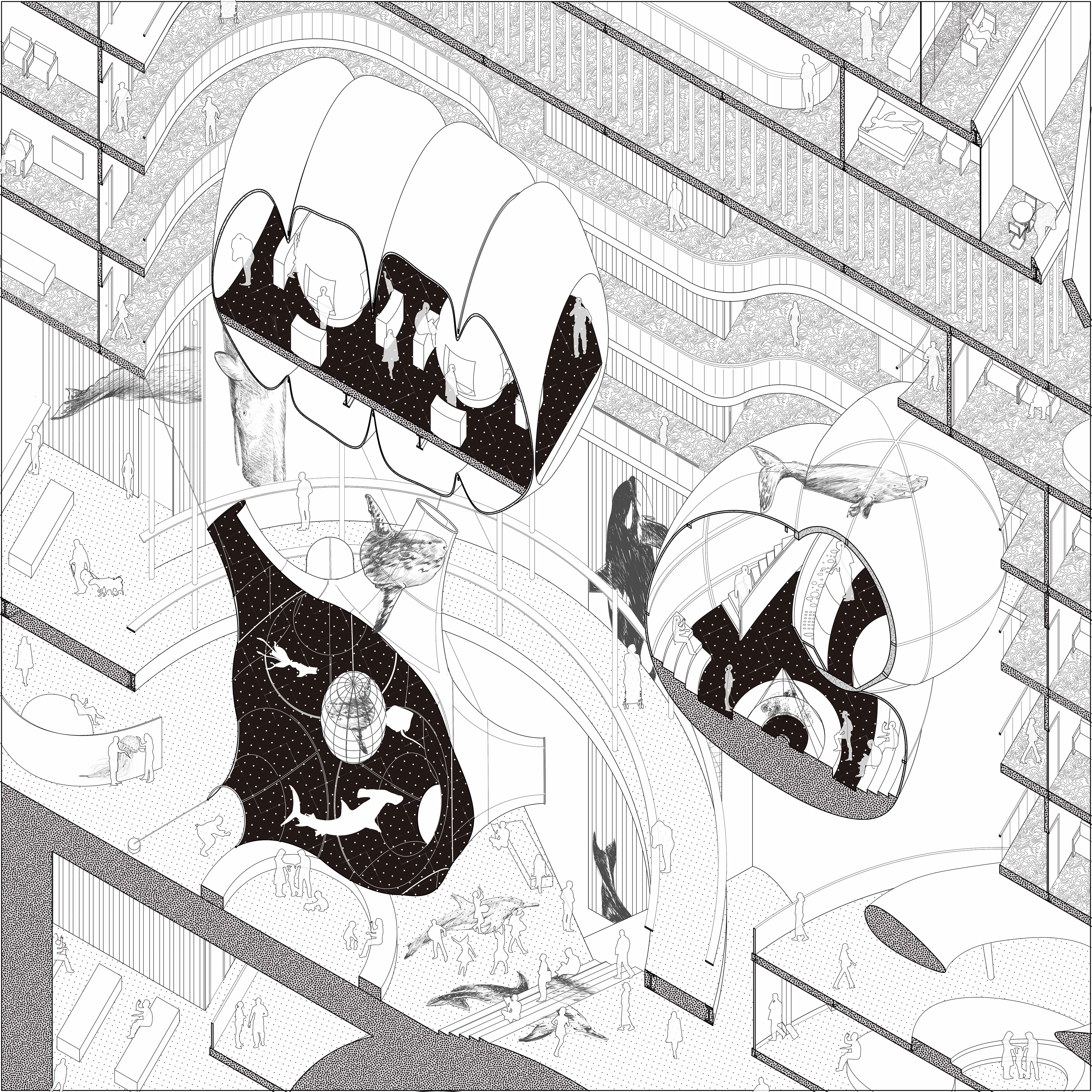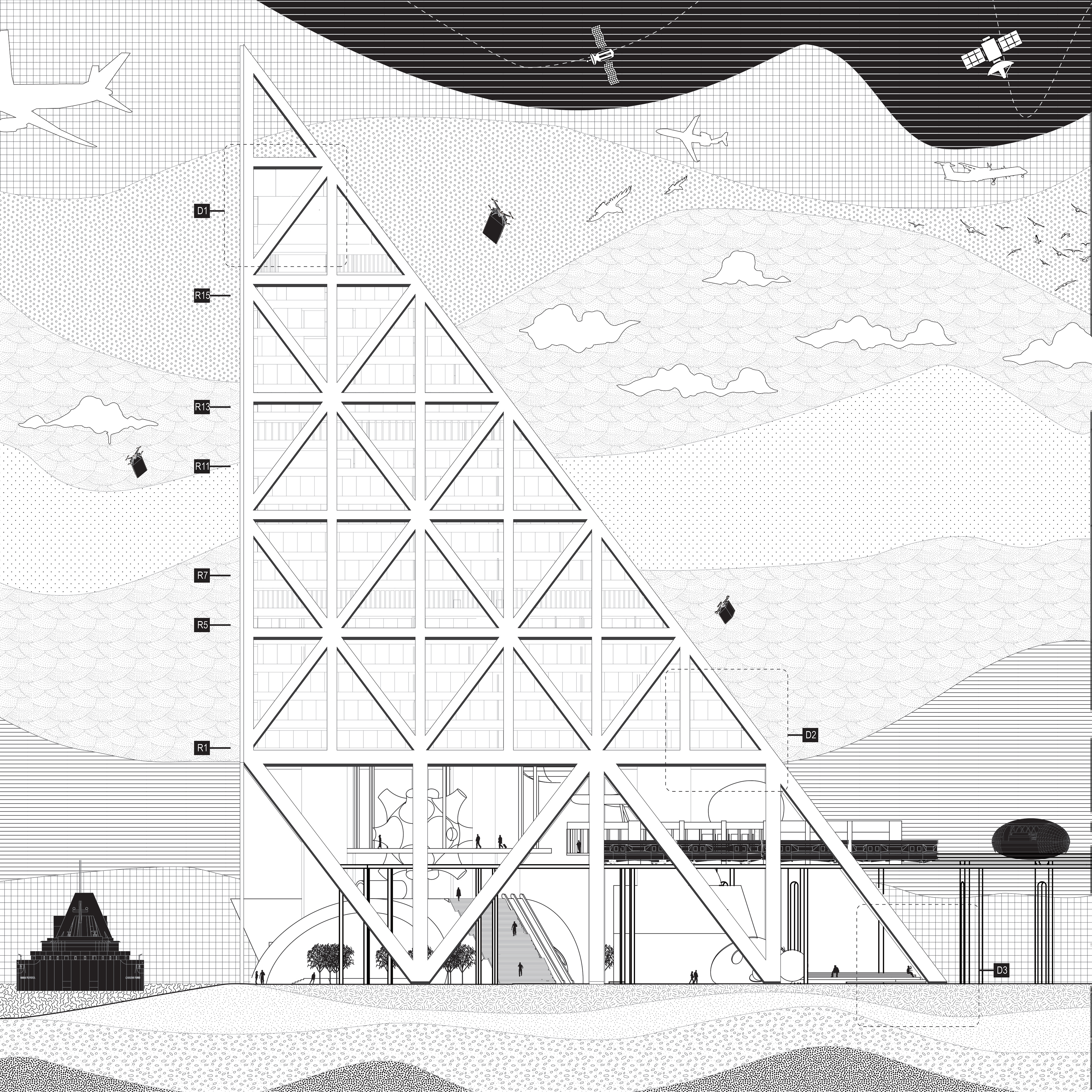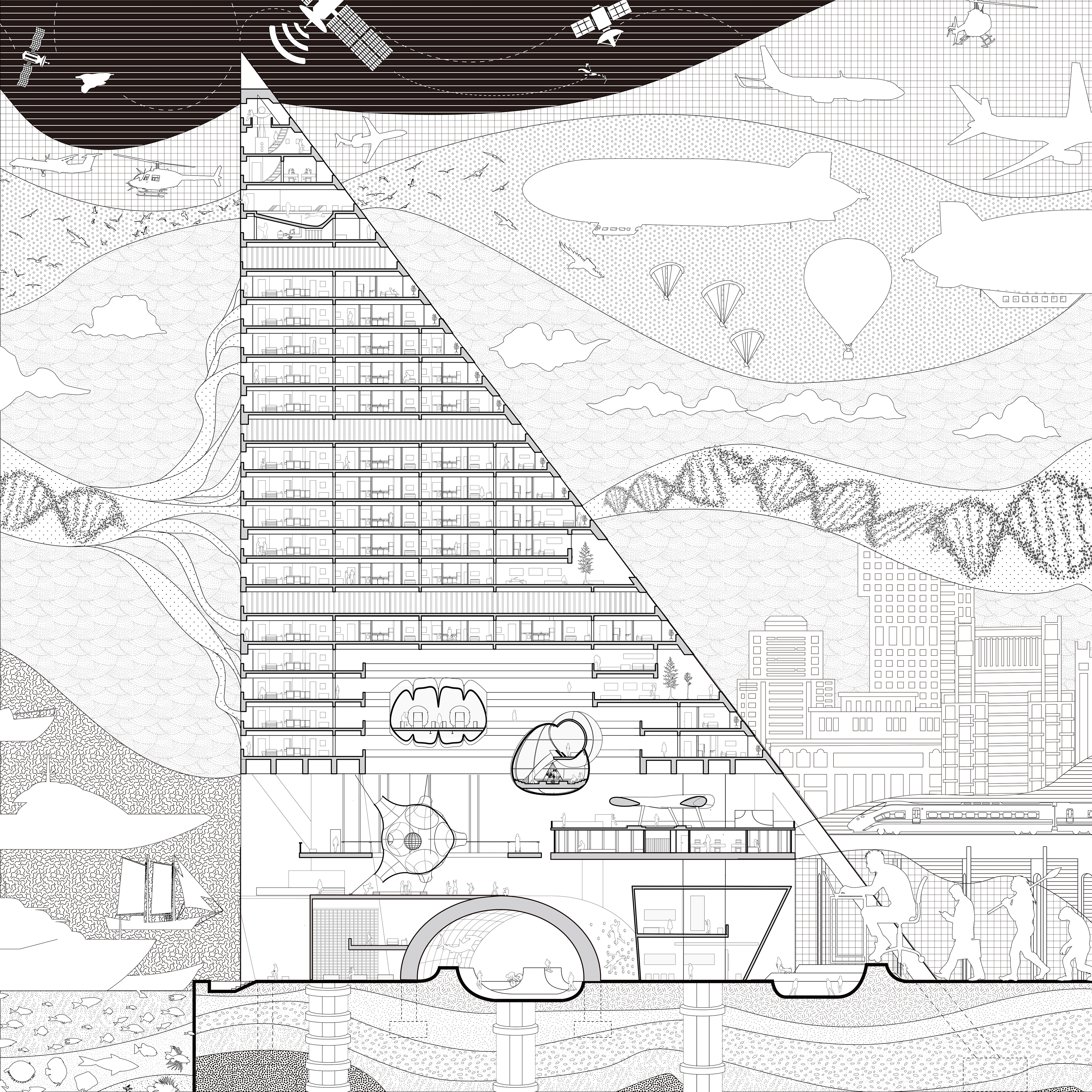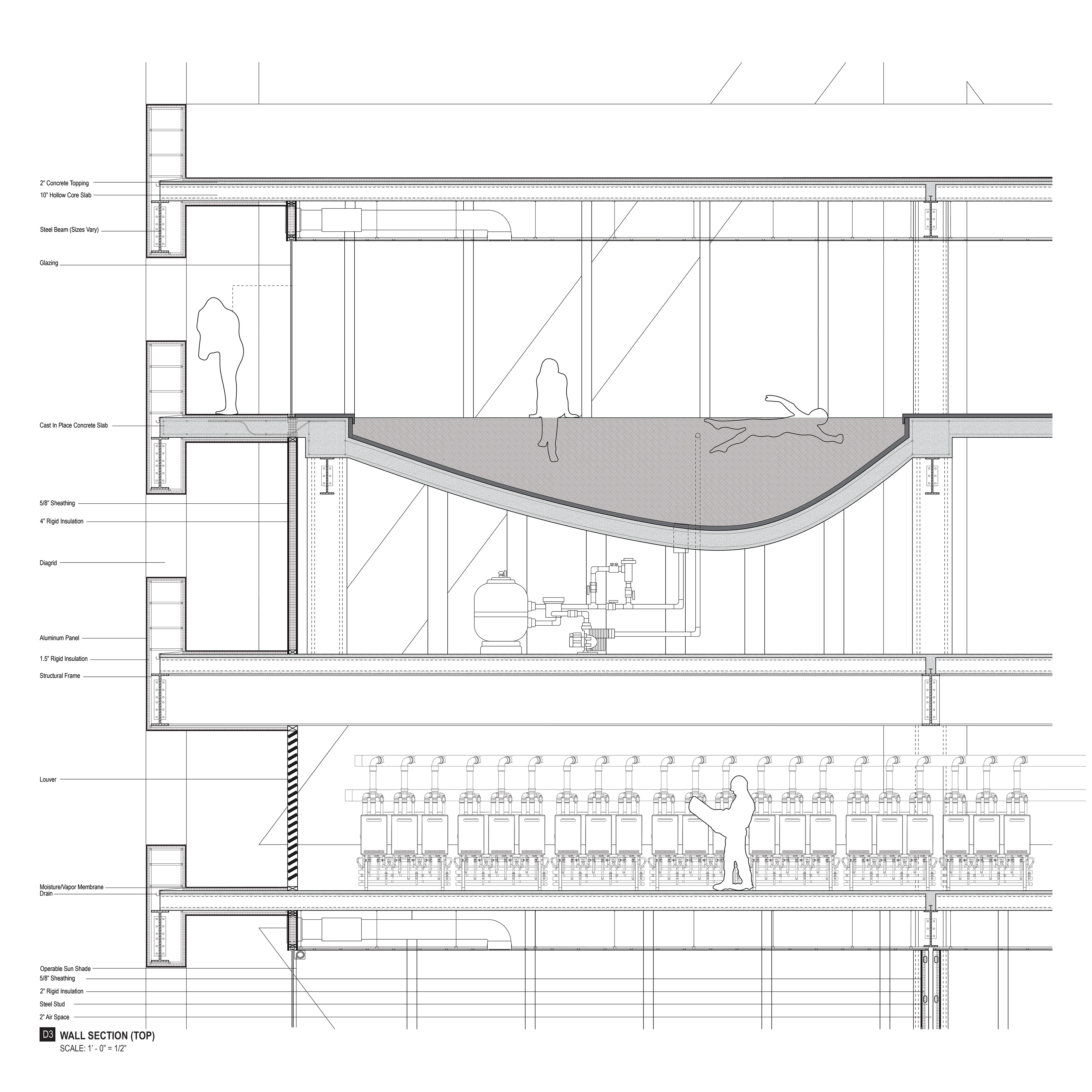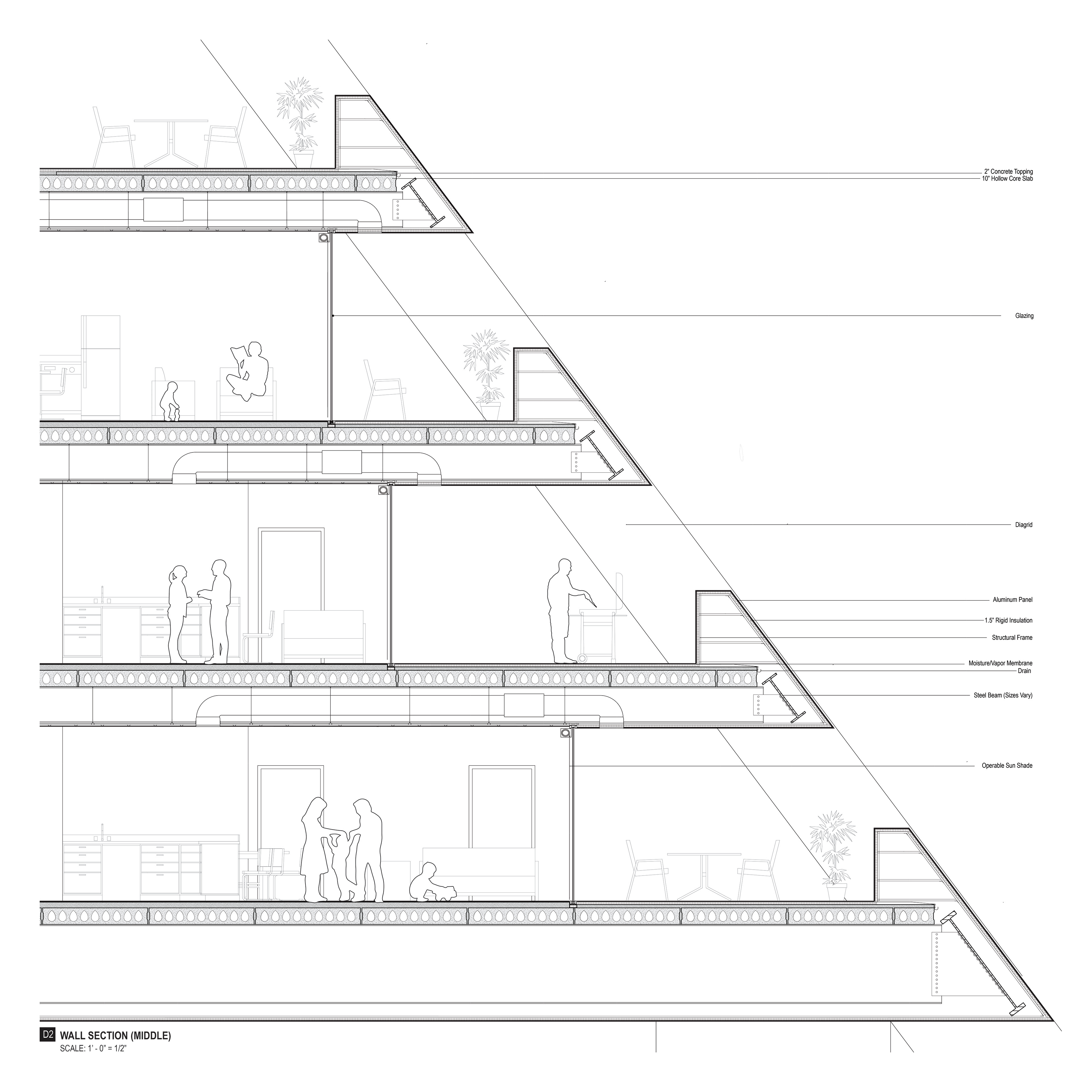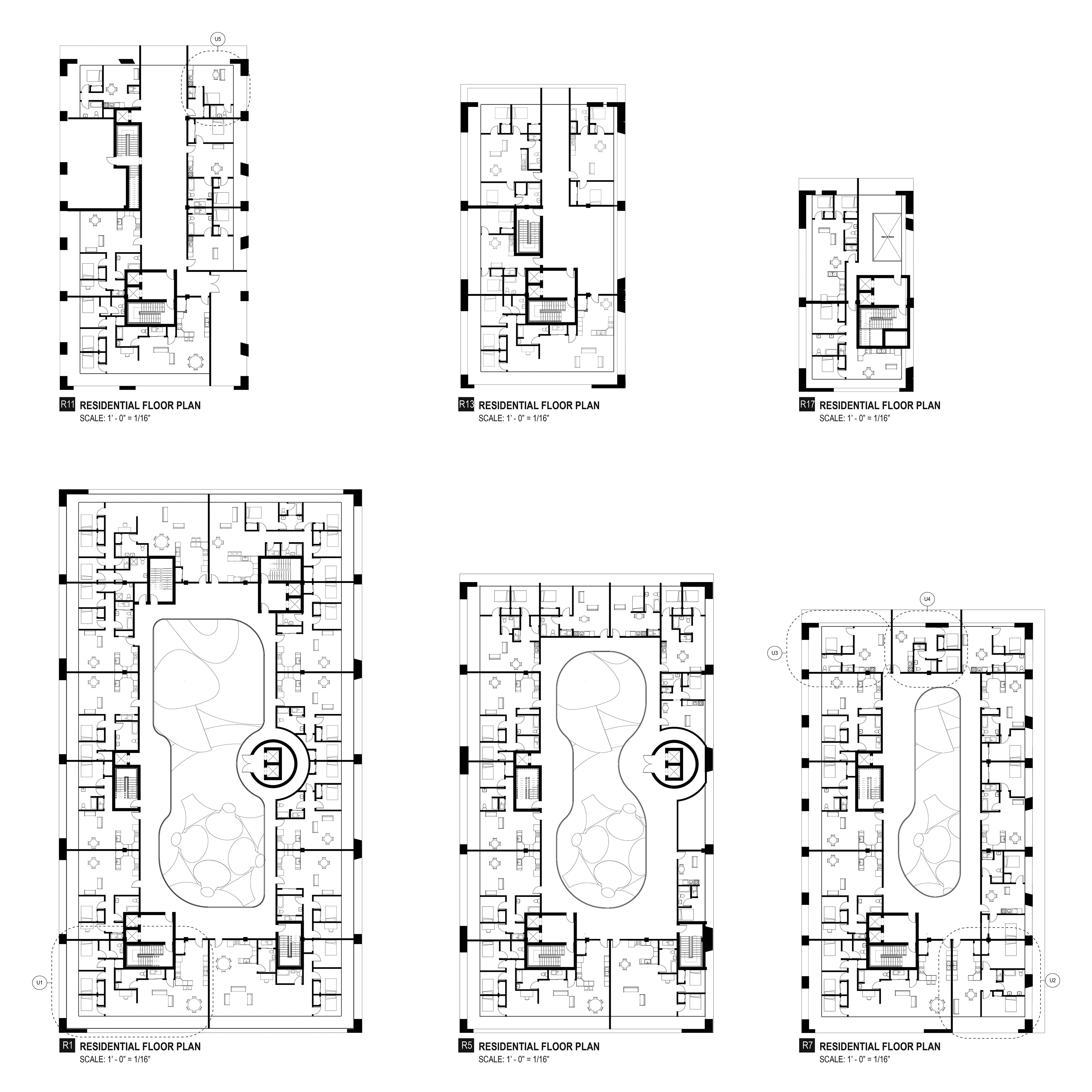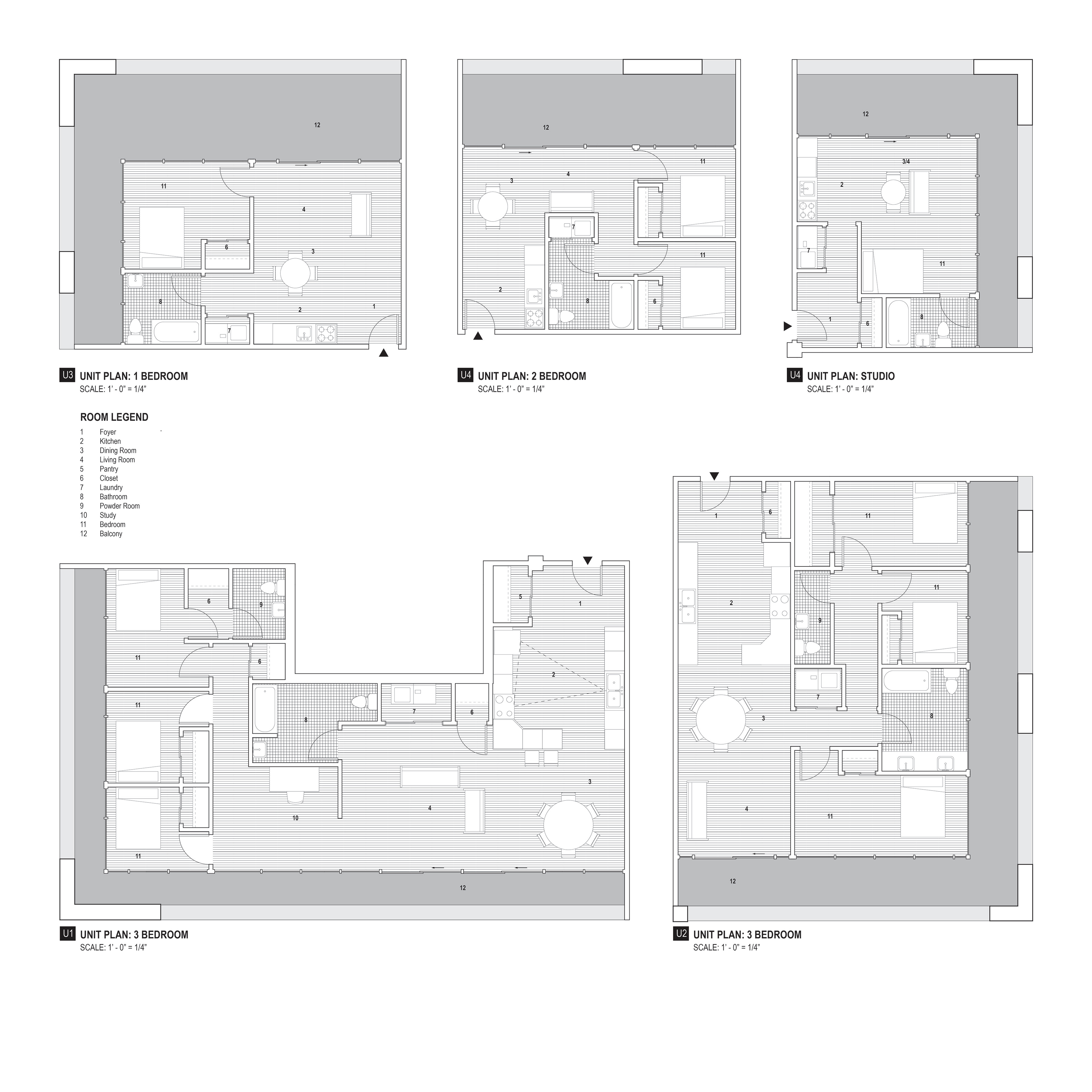HYPERSPACE HOUSING
FALL 2018/HOME IN THE AGE OF CYBORGS/SEAN VANCE & EL HAIDI JAZAIRY
TEAM MEMBERS: ZIYUAN FENG & YUANZHAO WANG
In the future, instrumentation will have a greater symbiosis with the human body and we will be forced to ask, “to what extent are we capable of integrating further the range of approaches to mechanizing body functions, natural systems, physical activity, safety sensory environments, and social connectedness?” This project raises this question relative to domesticity on a site in Detroit, Michigan. It attempts to explore what it means to not only be human, but also what the very notion of “dwelling” means in the age of cyborgs.
This project takes the stance that we are all currently cyborgs and in the process of becoming more sophisticated cyborgs as we move into the future. We have devices (i.e. smartphones, smart watches, smart glasses, computers, etc.) that tether us to an invisible network of information that surrounds us 24/7, and provide us access to space beyond what is physically around us.
The boundaries between man and machine, digital and physical, real and imagined have begun to blur and will continue to do so. This idea is intersected with the notion of “hyperspace”, which can be described as a “sub-region” of space that co-exists with our own universe; a hyperspace is a place “somewhere else”, unimaginable that is neither space nor time, matter nor energy, something nor nothing, usually only accessible with the aid of extremely advanced technology.[1]
In the Age of the Cyborg, working and learning occurs by “logging on”, AI performs most of the work needed to sustain human life, autonomous vehicles transport humans/cyborgs, and an increasing amount content in a variety of mediums is shared and consumed daily. These “advancements” will force us to reconsider what “home” means, but also will change how we use public space. Given that we will have more “free” time, it is likely that public space will be increasingly more important because it will become the center of our daily activities where a majority of socializing and recreating will occur (both physically and digitally).
Historically, Detroit has been a city known for innovation and technological advancement, however, since the invention of the automobile, Detroit’s skyline has been littered with buildings that serve a corporate agenda. The proposal for this site attempts to counter the current corporate landscape with a form, a pyramid, that has symbolically represented innovation, technology, strength, and the ability to channel energy, and utilize it in a way that provides a generous amount of public space, while also serving as a new icon for the city of Detroit that represents the aspirations of a housing project in the Age of Cyborgs.
The pyramid rises above the currently unactivated context that cuts the site off from the rest of the city. Situated on the riverfront, the pyramid attempts to attract visitors to the site with its grand gesture and serves as a more rewarding experience to the riverwalk than the parking lot that currently exists. The sphere, placed on a plinth of automated parking on the opposite corner of the site, responds to the parking structures and other infrastructure that dominates that side of the site. Circulation throughout the site occurs primarily through the ring that connects the sphere and pyramid buildings, the People Mover Station which connects to the midsection of the pyramid building, and all of which are connected to a series of cores that enable vertical circulation.
The apartment floors are raised 100’ into the air as a means of allowing public program to predominately occupy the ground space and accommodate the circulation nodes previously mentioned. An atrium is carved out of the center of the residential floors to allow a connection to the programs below. Within the atrium, “hyperspace” pods are introduced. These hyperspace pods are conceptualized as places that could accommodate a variety of programs some of which could pertain to recreation (skatepark), education (library), culture (art gallery), and socialization (computing center). These spaces are surrounded by a projection machine which allows the environment/atmosphere of the atrium space to evolve almost infinitely, reinforcing the notion of “hyperspace”.
This project allows man and machine, public and private, physical and digital to collide (and thrive) given the immersion in a “hyperspace”.
